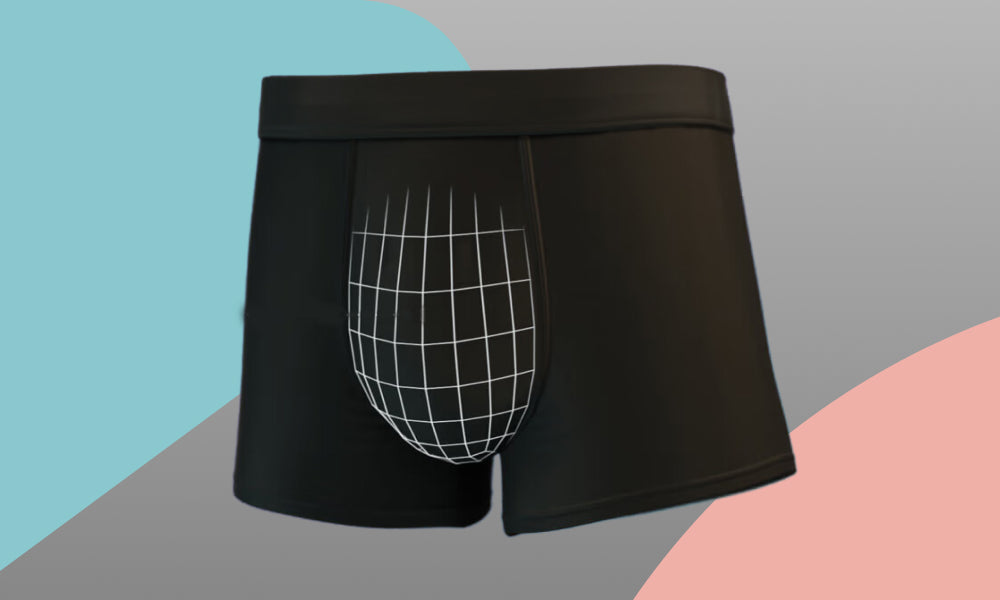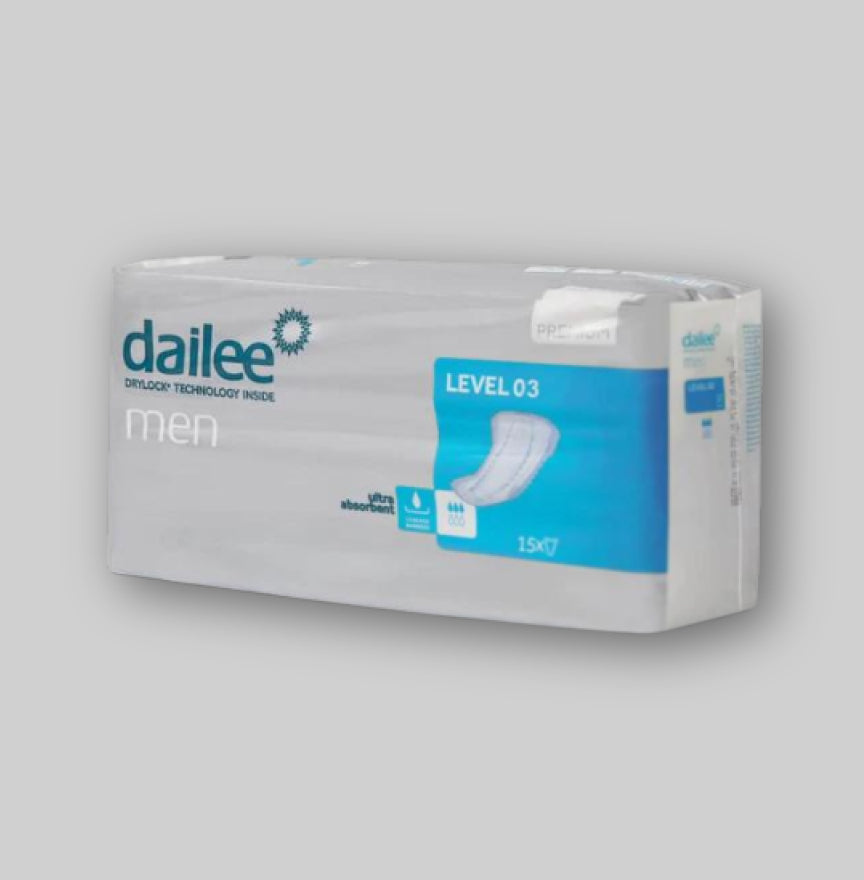Functional incontinence is a common problem in which people involuntarily leak urine due to physical or mental limitations that make it difficult to reach a toilet in time. This type of incontinence is different from other forms of incontinence because the bladder functions normally and the cause of the urinary incontinence is not in the bladder or sphincter muscles. People with functional incontinence may suffer from motor problems, disability, osteoarthritis, neurological disorders or medication use.

Functional incontinence is mainly a problem for older people (living at home or in a care institution) with reduced mobility, but it can happen to anyone. It is therefore important that there is a toilet nearby and accessible for people with functional incontinence. There are various treatments available to reduce the symptoms of functional incontinence, such as training the pelvic floor muscles, adjusting the diet and using incontinence materials. People with functional incontinence can also benefit from physiotherapy, occupational therapy and psychological support.
Definition of Functional Incontinence
Functional incontinence is a form of involuntary loss of urine in which the bladder functions normally, but physical or mental limitations make it difficult for people to reach the toilet in time. This can be caused by poor vision, reduced mobility, neurological disorders or forms of dementia.
People with functional incontinence do not have bladder problems, but have difficulty reaching the toilet in time. They cannot reach the toilet in time due to physical or psychological limitations. It is important to understand that functional incontinence is not the same as stress incontinence, urge incontinence or mixed incontinence.
Functional incontinence is sometimes also called drug incontinence. This is because the (unnecessary) use of certain types of diuretics can cause functional incontinence. Diuretics or diuretics are used for heart failure, edema and high blood pressure.
People with functional incontinence can suffer greatly from their condition. It can lead to feelings of shame and a reduced quality of life. It is therefore important to know that there are treatments available to reduce the symptoms of functional incontinence and improve the quality of life.
Causes of Functional Incontinence
Functional incontinence occurs when a person is unable to get to the toilet in a timely manner due to physical or cognitive limitations. There are several causes of functional incontinence . This section discusses the major causes of functional incontinence.
Physical limitations
Physical limitations, such as mobility problems, can lead to functional incontinence. For example, people who can no longer walk or control their movements may not be able to reach the toilet in time. Other physical limitations that can contribute to functional incontinence include muscle weakness, spasticity, and pain.
Cognitive impairments
Cognitive impairments , such as dementia and memory problems, can also lead to functional incontinence. For example, people with dementia may forget where the toilet is or how to use it. Other cognitive impairments that can contribute to functional incontinence include problems with orientation, understanding language, and making decisions.
Environmental factors
Environmental factors, such as the availability of toilets and the accessibility of public spaces, can also contribute to functional incontinence. For example, people who do not have access to a toilet or who cannot find a toilet may not be able to reach the toilet in time. Other environmental factors that can contribute to functional incontinence are the distance to the toilet, the presence of obstacles, and the availability of aids.
It is important to understand the causes of functional incontinence so that solutions can be found to reduce symptoms and improve the patient's quality of life .
Diagnosis and Evaluation

Functional incontinence can be diagnosed by a health care provider based on medical history, physical examination, and additional testing.
Medical history
The patient's medical history is of great importance in diagnosing functional incontinence. The physician will ask about the symptoms, the frequency of the symptoms, and any underlying conditions. It is important to know if the patient has other medical conditions, such as diabetes, heart failure, or COPD, that could contribute to or worsen urinary incontinence.
Physical examination
The physical examination can help determine the cause of the incontinence. The doctor will examine the abdomen and pelvic floor to determine if there is an anatomical abnormality. In addition, the doctor may test neurological functions to see if there is a neurological problem that is causing the incontinence.
Additional tests
Additional tests may help confirm the diagnosis of functional incontinence. For example, a urine test may be performed to see if an infection is present. In addition, a uroflowmetry may be performed to see how fast the urine is flowing and how much urine is being passed. A cystoscopy may be performed to examine the bladder and urethra for abnormalities.
All of these tests can help confirm the diagnosis of functional incontinence and determine the best treatment for the patient.
Treatment strategies

Functional incontinence can be treated with a variety of strategies, depending on the cause and severity of the condition. Below are some treatment strategies that can help manage functional incontinence.
Conservative treatments
Conservative treatments are aimed at reducing the symptoms of functional incontinence without the use of medication or surgery. This may include lifestyle changes, pelvic floor muscle training and the use of incontinence products .
Behavioral therapy
Behavioral therapy can help reduce the symptoms of functional incontinence by teaching new habits and behaviors. This may include scheduling regular toilet visits and avoiding certain activities that may aggravate the incontinence.
Medication
Medication may be prescribed to reduce the symptoms of functional incontinence. This may include the use of medications that improve bladder function or medications that relax the muscles in the pelvic floor.
Surgical options
Surgical options may be considered if other treatments have not been effective. These may include inserting an artificial sphincter or modifying bladder function through surgery.
It is important to emphasize that the choice of a particular treatment strategy depends on the individual situation of the patient. Therefore, it is important to always consult a doctor in case of complaints of functional incontinence.
Self-management and prevention

Functional incontinence can be prevented or reduced through self-management and prevention. There are several ways to achieve this, such as lifestyle changes, bladder training and the use of aids.
Lifestyle adjustments
A healthy lifestyle can help prevent functional incontinence. For example, it is important to drink enough and eat healthily. In addition, it is important to exercise regularly and avoid being overweight. Stress can also play a role in functional incontinence, so avoiding stressful situations can help.
Bladder training
Bladder training can help train the bladder and improve bladder control. This can be done by gradually increasing the time between toilet visits. It can also help to learn to relax during urination and to train the pelvic floor muscles.
Use of resources
There are various aids available that can help with functional incontinence. These include incontinence materials, such as absorbent pants or diapers. There are also aids that make it easier to go to the toilet, such as toilet raisers or urinals. It is important to choose the right aids and use them correctly.
Through self-management and prevention, people with functional incontinence can reduce their symptoms and improve bladder control. It is important to seek advice from a healthcare provider about the best approach for individual situations.
Social and Psychological Impact

Functional incontinence can have a major impact on people's daily lives. It can lead to social isolation and psychological problems. People with functional incontinence often fear misunderstanding or rejection, which causes them to hide their symptoms from their loved ones. This can lead to feelings of shame and loneliness.
Incontinence can also lead to problems at work or in the school environment. People with functional incontinence often have difficulty concentrating and may feel uncomfortable in social situations. This can lead to reduced productivity and performance at work or in the school environment.
In addition, incontinence can also lead to financial problems. People with functional incontinence often have to spend a lot of money on incontinence products and medical care. This can lead to financial stress and anxiety.
It is important to recognize that functional incontinence is a serious problem that can have a major impact on people’s lives. It is important to support people with functional incontinence and help them find solutions that will improve their quality of life.
Future Research and Developments

Functional incontinence is a common problem in the elderly and people with disabilities. There is currently a lot of research into new treatments and technologies to address this problem.
One of the developments in the field of incontinence is smart incontinence material . This is incontinence material that is equipped with sensors that measure urine production and send this information to an app on the smartphone of the user or the care provider. In this way, it is possible to keep better track of how much urine is produced and to intervene more quickly in the event of any problems.
Another development is the use of pelvic floor therapy for functional incontinence. This involves exercises to strengthen the pelvic floor muscles and improve bladder control. Research shows that pelvic floor therapy can be an effective treatment for functional incontinence in women.
Finally, research is also being done into medications that can help with functional incontinence. For example, there are medications that relax the muscles in the bladder, which allows urine to be retained better. Also, medications are being developed that affect the nerves that control the bladder, which allows the bladder to function better.
All these developments offer hope for people who suffer from functional incontinence. With the right treatment and technologies, this problem can be better addressed and the quality of life of patients can be improved.


















